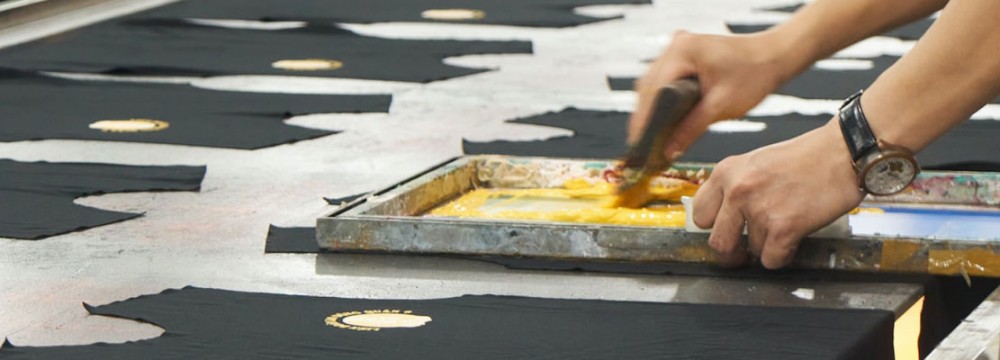Screen printing
Also known as "serigraphy" in the world of art, is probably one of the most common forms of printing technique. This is due to it being simple enough to be taught to children and versatile enough to be used on different surfaces, including T-shirts, plastic cups, buckets, large-scale prints, and decals.
How does the process go?
Well, it is a process where you affix a non-permeable stencil on a permeable mesh to build your design. The ink will pass through the blank area by inking the surface of your material.
When did it start?
The earliest form of screen printing was seen in China during the Song Dynasty. They employed silk worms to create their meshes, giving the name "silkscreen" to this concept. As often as we see it on promotional items and large print formats, we can also find it in school and art classes, with students as young as 7 years old.
At first glance
you would think that it is not possible to do full colour prints on this medium. But with the rise of technology came the CMYK method of screen printing, which refers to the 4-colour process (cyan, magenta, yellow, and black). Though this is not often used in What is today's process of screen printing? We start by creating a mesh. Most times, these are readily available in your local art supplier with varying sizes, so we can pretty much skip creating one. Then, we create our stencil. There was a time that we used films that we need to draw on and cut out, but now we use mesh fillers or emulsions to create an impermeable surface to stop the ink from going through. We would apply an emulsion and apply a design with the use of tracing paper to stop the sun's light from curing the surfaces that we don't wish to harden. Then wash off these areas with your regular soap and water.
We now have a screen that’s ready to print
All we need to do is fix it on a surface, even out an ink layer on the pattern, and push it on the surface with one quick but steady stroke.
Sounds simple?





